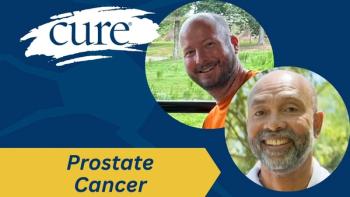
What You Need to Know About the Dense Breast Issue
With new research and legislation, women are learning what dense breast tissue means for breast cancer screening and risk.
After numerous biopsies on her dense breasts came back benign, Mary Fadie thought she had managed to escape breast cancer. For nearly a decade, she knew from suspicious mammograms and subsequent surgery that she had very dense breasts. But it wasn't until 2008, at age 46, that she discovered a hard, pea-sized lump that ultimately was diagnosed as cancer. The tumor turned out to be one of a malignant constellation in her right breast, joined by a single cancerous lesion in the other.
An ultrasound technician with ready access to scans and helpful co-workers, Fadie read conflicting information over the years about how mammographic breast density contributes to breast cancer risk. Her radiologist clarified the matter by insisting that a bilateral mastectomy was the best course after her stage 1 diagnosis because mammograms—which have trouble detecting cancer in dense breasts–might miss any potential recurrences.
“I had so many lumps and bumps, and so many false alarms, that I sort of wrote it off,” says the Colorado woman. “The (density) issue really did seem unknown. Nobody was telling me I was high risk at all.”
Dense breasts contain more fibrous and glandular tissue—which appears white on mammograms, just like cancers–while fatty tissue shows up as gray or black. About 10 percent of women have extremely dense breasts, according to the American College of Radiology, while 10 percent have almost entirely fatty breast tissue and the remaining 80 percent fit into one of two middle categories on a 1 to 4 ratings scale known as BIRADS (Breast Imaging Reporting and Data System).
Women like Fadie with the highest density are 4 to 5 times more likely to develop breast cancer than women at the lowest extreme whose breast tissue is mostly fat, says Carol Lee, MD, a diagnostic radiologist at Memorial Sloan-Kettering Cancer Center in New York City. These women, however, are no more likely to die from the disease than others with breast cancer, according to a 2012 study in the Journal of the National Cancer Institute.
“Fatty tissue isn’t breast cells, although it may be in the breast,” explains Stacey Vitiello, MD, a radiologist specializing in breast imaging and biopsy at Montclair Breast Center in Montclair, NJ. “The more fatty tissue is in the breast, the less real estate there is to develop cancer in. Dense breasts have more ‘active’ breast tissue specific to breasts where cancer forms.”
While the issue has been researched for many years, the gap seems to be narrowing between what doctors and women know about breast density’s link to cancer risk. Thanks to aggressive grass-roots efforts, five states (New York, Connecticut, Texas, Virginia and most recently, California) have passed legislation requiring health care providers to notify women if dense breast tissue is seen on a mammogram, with similar laws pending in Congress and about a dozen other states. An organization known as
But doctors and breast care advocates don’t agree on the significance of such legislation, since there’s no consensus among experts on how to manage patients with high breast density and the laws aren’t accompanied by a clear medical policy on what professionals or patients should do with the information.
“My own personal view is that I don’t think government should be legislating what people are told. We don’t know the exact significance,” says Lee, noting that any woman can ask her radiologist for her BIRADS score regardless of her state’s formal law. “A woman can’t tell on her own if she has dense breasts, no matter what they may feel like. There’s no other way to know than having a mammogram.”
Vitiello, on the other hand, supports such legislation, calling it a “first step in women becoming aware of an issue very important for their ability to protect themselves from advanced breast cancer.”
“If a woman who had a normal reading on her mammogram thinks she doesn’t have breast cancer, and she doesn’t know she has dense breasts, that’s not effective screening,” she says. “Women can do their own research and decide if they want to take their screening to the next level and have an ultrasound, or if they’re high risk for other reasons, to have an MRI. The laws empower women to potentially do something if they wish to . . . (but) no one makes them.”
“A woman can’t tell on her own if she has dense breasts, no matter what they may feel like. There’s no other way to know than having a mammogram.”
The ability of ultrasound and MRI scans to pick up cancer are not diminished by breast density as is mammography, making them more effective especially when combined with a mammogram. But ultrasound produces a high percentage of false-positive results leading to unnecessary biopsies, Lee notes. MRI, which catch more cancers than mammography or ultrasound, also suffers from a higher false-positive rate. Add to that, MRIs can easily cost a thousand dollars or more, making them impractical for mass screening. Some insurance companies will cover MRI if the mammography report states that increased breast density may impair the ability for accurate diagnosis.Either technique, if recommended, would be paired with mammography and not act as a replacement.
Both Vitiello and Lee agree that unless women with dense breasts have other risk factors for breast cancer, such as a strong family history, they should be screened identically to average-risk women—an issue not without its own controversy, but typically recommended as mammograms every year or two beginning at age 40 or 50.
Prevention with selective estrogen receptor modulators (SERMs), often prescribed for women with estrogen-positive breast cancers, is too aggressive a tactic for those whose only risk factor for the disease is dense breasts, although this criteria for selection of preventive measures is under study.
“There’s no evidence that putting people on (estrogen blockers such as) tamoxifen because of dense breasts is a reasonable thing to do, and certainly not screening earlier, either,” Lee says.
What about breast cancer survivors? Adding dense breasts to the picture increases the odds three-fold that breast cancer survivors will be diagnosed in the opposite breast after a lumpectomy for ductal carcinoma in situ, according to a study in Cancer Epidemiology Biomarkers & Prevention.
Vitiello would recommend annual breast MRIs for breast cancer survivors regardless of their breast density—advice she says hasn’t yet become standard treatment but is being heavily discussed at radiology conferences. The current standard for breast cancer survivors is mammography.
Cancer-free since her double mastectomy and the six cycles of chemotherapy and hormone treatments that followed, Fadie is grateful that breast density awareness is emerging as a cancer-screening issue, even if progress has been slow.
“Dense tissue really does inhibit early detection,” she says. “I do wonder how extensive (mine) would have been by the time a mammogram would have seen it.”




